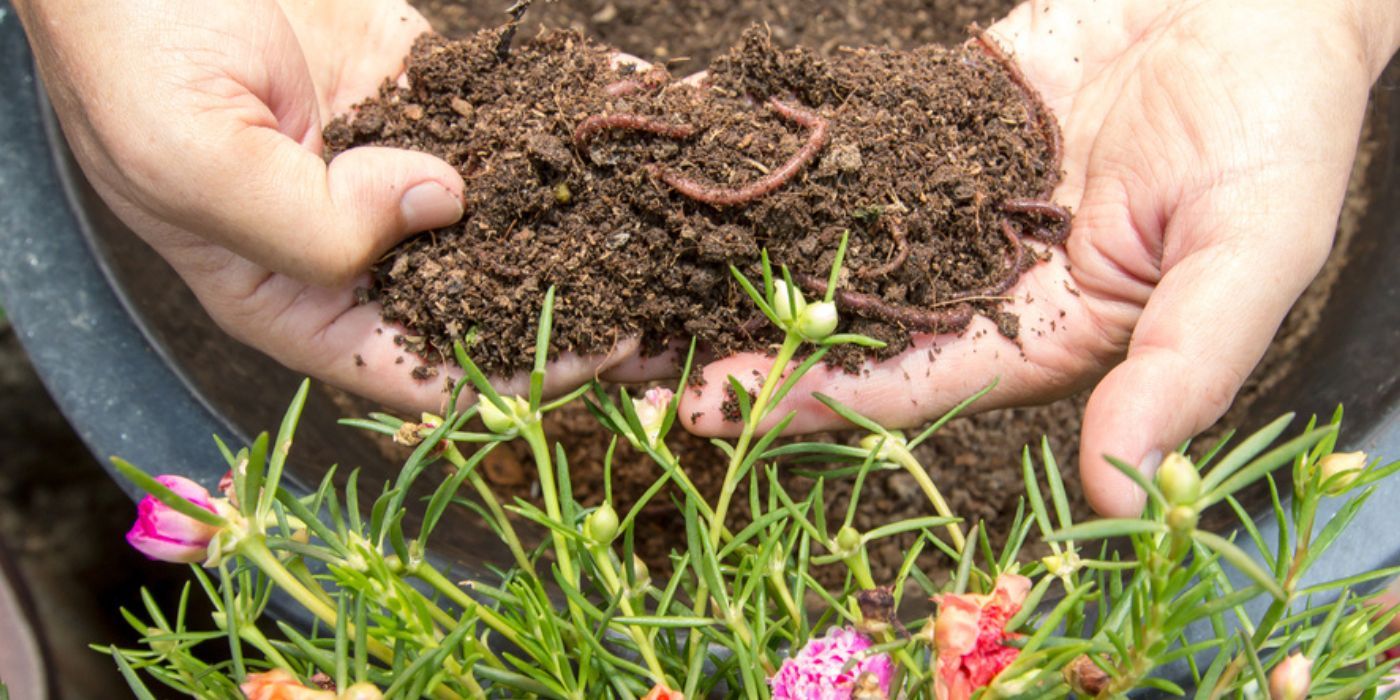Tiny brown worms are a common sight in houseplant soil. As a houseplant owner, you’ve likely noticed these wiggly little creatures in your potting mix at some point Although they may look a bit gross, these worms are usually not harmful to your plants Here’s what you need to know about identifying and managing tiny brown worms in houseplant soil.
What Are the Tiny Brown Worms?
The tiny brown worms frequently found in houseplant soil are most likely the larvae of fungus gnats. Fungus gnat adults are small mosquito-like insects about 1/8 inch long that look like tiny flies. The larvae are thin legless, cream-colored worms about 1/4 inch long that feed on organic matter and fungi in moist soil.
While they don’t directly harm plants by feeding on roots, they can spread fungal diseases. Large infestations can also cause damage to root hairs.
How Do They Get Into Houseplants?
There are a few ways fungus gnats find their way into indoor potted plants
- They may already be present in the potting soil or plant roots when brought home from the nursery.
- Adults fly in from outdoors and lay eggs in moist houseplant soil.
- They arrive on infected cuttings or new houseplants added to your collection.
- Larvae crawl out of pot drain holes in search of new plants and soil to infest.
Fungus gnat populations multiply rapidly in damp soil rich in organic matter where they thrive.
Signs of Fungus Gnat Larvae in Houseplants
Watch for these common signs that fungus gnat larvae have invaded your houseplant’s soil:
- Tiny brown worms swimming in the top layer of wet soil or dangling from drain holes.
- Clouds of tiny flying insects hovering over soil, especially after watering. These are the adult fungus gnats.
- Silvery translucent trails on soil surface from larvae movement.
- Damaged or dropped leaves with ragged holes chewed by larvae.
- Houseplant decline, stunted growth, or droopy yellowing leaves from excessive larvae feeding on roots.
- Excessive amounts of stringy fungus overtaking the soil, which larvae spread.
How to Get Rid of Fungus Gnat Larvae in Potting Soil
If fungus gnat larvae have invaded your houseplant soil, here are some effective ways to get rid of them:
- Let soil dry out completely between waterings to deter adults from laying eggs.
- Remove and replace the top few inches of soil, which is where eggs and larvae live.
- Repot plants in sterile potting mix to eliminate larvae and eggs.
- Use hydrogen peroxide or mosquito dunks to kill larvae in soil. Follow instructions carefully.
- Sticky traps catch adult flies before they can reproduce. Trap or swat adults flying near plants.
- Sprinkle a thin layer of sand or perlite over soil to dry out the surface and discourage adults.
- Water plants from the bottom to avoid wetting the top layer of soil where larvae live.
With persistence, you can eradicate fungus gnat larvae from your houseplant soil and prevent future infestations. A dry, sterile growing environment is key to keeping these pests from multiplying in your indoor houseplants.
How to Prevent Fungus Gnat Problems
Prevention is the best medicine when it comes to avoiding a fungus gnat situation. Here are some tips:
- Allow soil to dry out between waterings. Overwatering encourages gnats.
- Remove debris and weeds where adults hide. Keep indoor plants and surfaces clean.
- Use sterile potting mixes and clean containers. Don’t reuse old soil that may contain eggs and larvae.
- Inspect new plants closely. Isolate them until you’re sure they aren’t harboring gnats.
- Apply an inch of sand, gravel, or pebbles over soil to deter adult flies from laying eggs.
- Use yellow sticky traps early to catch adults before they reproduce. Monitor weekly.
- Let soil dry out occasionally to starve larvae. Allow pots to get lighter before watering again.
With proper cultural practices, you can avoid having these annoying insects take over your houseplant soil and discourage future infestations. Tiny brown worms in potting soil are a nuisance, but with persistence, you can eradicate fungus gnat larvae and adults from your indoor plant collection. A dry, clean environment and preventive measures will keep these pests from multiplying in your houseplants’ soil.

✿ Welcome & Enjoy!




✿ ✿ ✿ ✿ ✿ ✿ ✿ ✿ ✿ ✿

Tiny bugs in houseplant soil
FAQ
Is it normal to have worms in indoor plant soil?
They literally eat their way through the soil, leaving their castings that contain organic nutrients that are readily bio-available. They won’t eat the plants you put in that soil. Worms living in your potting soil are an indication that the soil (mostly compost) is healthy and will support your plantings.
Why do I keep finding small brown worms in my house?
Noticing brown or black worms in carpet crevices, underneath furniture, or near threadbare patches on rugs, can indicate the presence of Carpet Beetles. Carpet Beetles can be eliminated using cleaning, vacuuming, and either pesticides or natural methods like diatomaceous earth.
What are the tiny little brown worms?
The most Common species of millipedes are usually brown or black in color, but there are also some species that are orange or red. Millipedes are usually 1 to 2 inches long with worm-like bodies that are divided into many segments, each containing two pairs of legs.
Are centipedes in the soil good or bad?
Centipedes in soil are generally good for the garden. They are beneficial predators that help control populations of other insects and invertebrates that might be harmful to plants.
